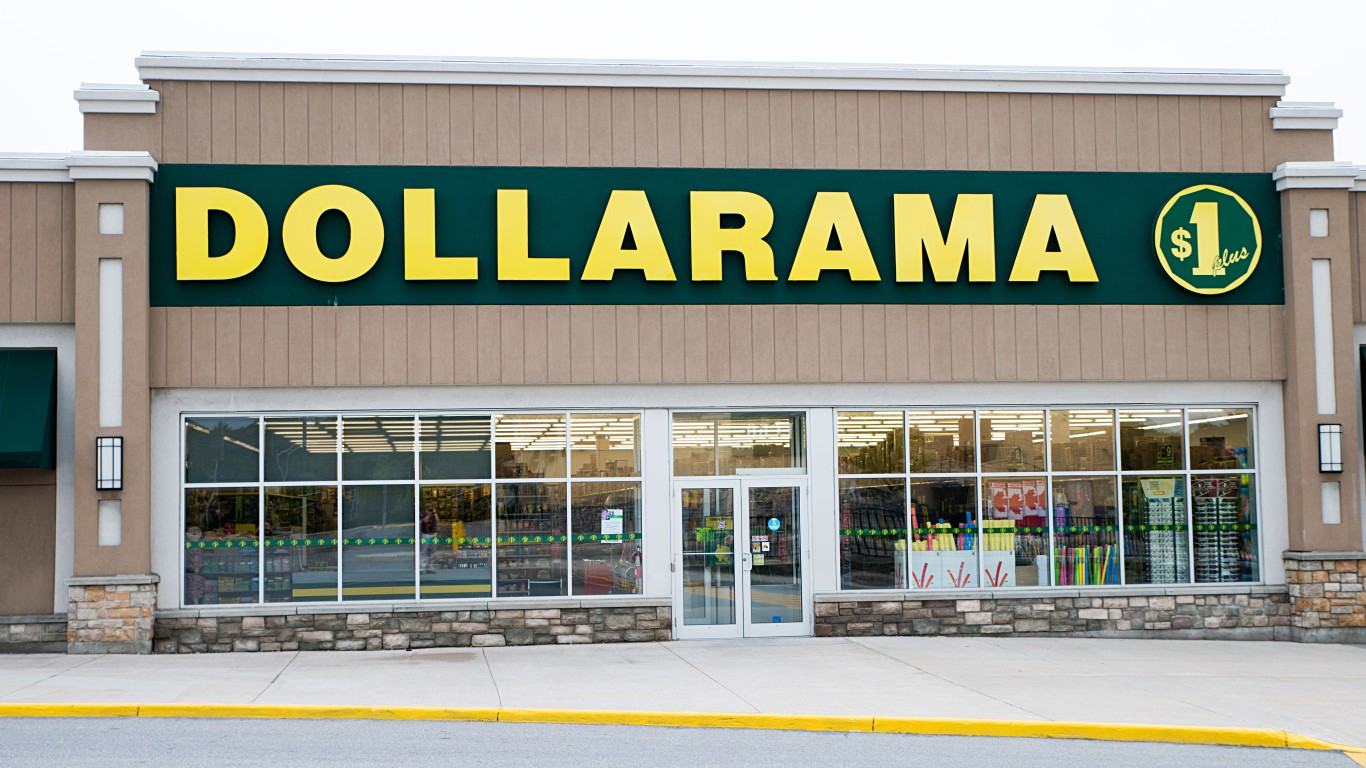

Dollarama (CA:DOL) reported very strong fourth-quarter 2023 results on March 29. Yet its stock was up less than 3% on the news.
Inflation has hurt Canadians, but the Montreal-based company has taken it in stride. As a result, its Q4 results were some of the best in the company’s 30-year history.
Revenue in the fourth quarter was 20.3% higher than a year earlier, at a reported $1.47 billion. Its same-store sales grew by 15.9% in the quarter. Dollarama opened 24 net new stores in Q4 2023. [All figures in Canadian dollars, unless otherwise noted.]
On the bottom line, its operating income increased by 20.8% to $381.4 million. Its operating profits accounted for 25.9% of its revenue.
Dollarama’s revenue in 2023 (January year-end) was $5.05 billion, 16.7% higher than a year earlier. Its same-store sales grew by 12.0% in 2023. Dollarama opened 65 net new stores in the past year.
On the bottom line, its operating income increased by 21.0% to $1.19 billion. Its operating profits accounted for 23.6% of its revenue, 90 basis points higher than a year earlier.
“Our outstanding performance in Fiscal 2023, including a 12% increase in comparable store sales and EPS growth of 27%, further reinforces the relevance of our value retail concept for consumers, the enduring strength of our unique business model and our disciplined execution,” said Neil Rossy, president and CEO.
Margins Remain High
One sign Dollarama has a quality management team is its gross margins in 2023. They were 43.5%, just 40 basis points less than in 2022. Most of the expense had to do with increased supply chain costs.
In fiscal 2023, the company raised some items’ prices to $5. While the average transaction size decreased by 2.2% in the past year, the number of transactions increased by 14.6%.
That’s a sign more Canadians were looking for more deals on everyday items. Until inflation cools, Dollarama will continue to see more customers than usual.
“In these inflationary times, with interest rates being so high, a lot of Canadians are feeling the economic pinch, and so Dollarama is looking very much like their salvation,” CBC reported Queen’s University finance professor Ken Wong’s comments about the results. “Customers believe that Dollarama is going to have lower prices.”
Wong points out that Dollarama prices its products differently than most retailers. It decides what price it wants to charge for products and then works backward to determine the highest it can afford to pay for that product to meet its margin goals.
In some ways, it’s similar to the way Costco (US:COST) prices its products in that the membership warehouse retailer is always looking to lower the costs of its products so that it can pass those savings on to its card-carrying customers.
As a result of Dollarama’s pricing strategy, it tends to avoid food products if it can’t meet margin targets. So, unlike in the U.S., where Dollar General (US:DG) is gobbling up market share in the food aisles, Dollarama will continue to tread carefully in this area.
Besides softdrink fridges, Canadian consumers will unlikely see the giant frozen food selection found south of the border.
Latin American Growth
Even further south, Dollarama continues to grow.
In 2013, it partnered with DollarCity, a Latin American discount store. It initially provided expertise to the group but did not invest any capital in the business.
Six years later, Dollarama acquired 50.1% of DollarCity for between US$85 million and US$95 million. When it acquired the stake in 2019, DollarCity had 180 stores with plans for 600 by 2029. It ended fiscal 2023 with 440 stores, including 261 in Colombia, 89 in Guatemala, 66 in El Salvador, and 24 in Peru. It added 90 stores in the 12 months ended Dec. 31, 2022.
Dollarama’s 50.1% share of DollarCity’s net earnings was $45.4 million, 37% higher than a year earlier. Investors can expect its earnings from Latin America to continue rising as it opens more stores.
Still Buying Back
In 2023, as part of the company’s normal course issuer bid (NCIB), it repurchased 8.92 million of its shares, at an average price of $77.28, for a total cash outlay of $689 million. As a result, it has 9.26 million shares left under its NCIB, which expires on July 6.
The company announced on March 29 that it would increase its quarterly dividend by 28% to $0.0708 from $0.0553. The annual rate of $0.28 yields 0.35%. It’s not much, but it’s something.
Fintel’s Institutional and Fund Ownership dashboard reveals that several of Blackrock’s (US:BLK) iShares exchange-traded funds have been adding to their positions in DOL stock, with large buys by portfolio managers of iShares Core MSCI International Developed Markets ETF (US:IDEV) [144,755 shares] and iShares Core MSCI Total International Stock ETF (US:IXUS) [323,315 shares].
Investors might want to take a closer look at the discounter’s shares. They appear ready to take flight.
This article originally appeared on Fintel
Sponsored: Attention Savvy Investors: Speak to 3 Financial Experts – FREE
Ever wanted an extra set of eyes on an investment you’re considering? Now you can speak with up to 3 financial experts in your area for FREE. By simply
clicking here you can begin to match with financial professionals who can help guide you through the financial decisions you’re making. And the best part? The first conversation with them is free.
Click here to match with up to 3 financial pros who would be excited to help you make financial decisions.
Thank you for reading! Have some feedback for us?
Contact the 24/7 Wall St. editorial team.



